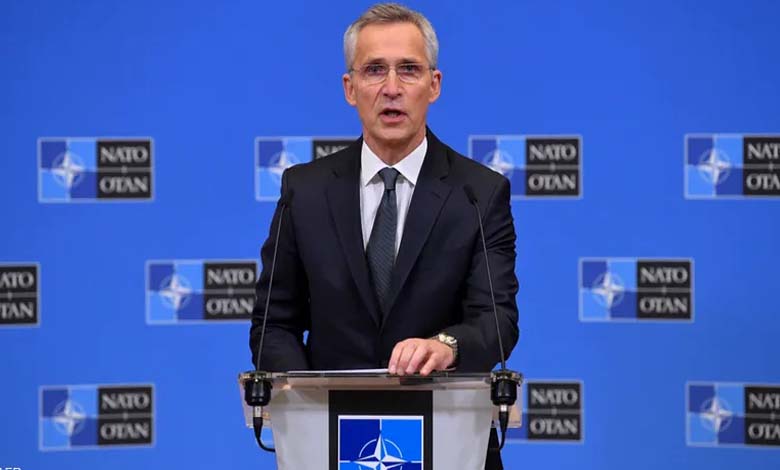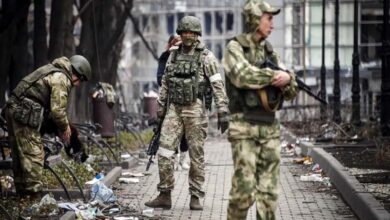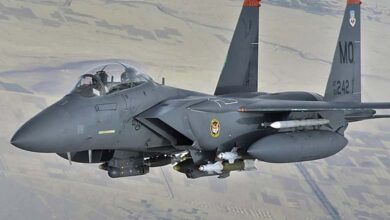On NATO’s Doorstep… A New Russian Facility Raises Western Concerns

Recent satellite images have revealed that Russia is building a facility believed to be a sophisticated military listening station in the strategic enclave of Kaliningrad.
-
After a 40-Minute Call… Trump Announces Preparations for a Meeting Between Putin and Zelensky
-
Ukraine War and Nuclear Warheads: What Does Putin Want from the Alaska Summit?
According to Newsweek, this new installation, located in the territory wedged between Poland and Lithuania, has heightened Western fears over Moscow’s expanding intelligence capabilities directly on NATO’s borders.
An open-source investigation project monitoring developments in the war in Ukraine reported that construction began in March 2023 and is now nearly complete.
The complex is situated in the Chernyakhovsk area, south of an air base belonging to Russia’s Baltic Fleet. It features a massive circular array of antennas described as an “advanced military communications and intelligence system.”
-
Trump-Putin Summit: Alaska Revives Its History and Seeks Strategic Prominence
-
Putin Invites Arab Leaders to Participate in the First Russian-Arab Summit in October
Strategic significance
The importance of such installations—known as circularly distributed antenna arrays—dates back to the Cold War, when both the United States and the Soviet Union used them to determine the direction of signals, conduct electronic surveillance, and even communicate with submarines.
The new station is expected to give Russia the ability to intercept NATO’s wireless communications and pinpoint their sources with high accuracy.
Satellite analysis indicates that the antenna array measures around 1,600 meters in diameter, far larger than conventional models.
Key features supporting its intelligence role include evenly spaced circular excavations that could accommodate vertical antennas, radial extensions from the center believed to be buried signal cables, and a fortified security perimeter.
-
Ukraine’s allies rally to support it… ‘A show of presence’ against Putin and Trump
-
The 1000th Day of the Ukrainian War… Putin Opens the Nuclear Door
A sensitive strategic context
Experts argue that the choice of Kaliningrad is logical from a military standpoint: it is Russia’s closest territory to Western Europe, serving as a forward outpost that allows Moscow to monitor NATO’s electronic communications in the Baltic and Eastern Europe.
It also enables communication with submarines and supports Russia’s doctrine of electronic warfare, which focuses on denial, surveillance, and information control.
Kaliningrad itself is one of the most heavily militarized areas in Russia, hosting air defense systems and ballistic missiles, making it a constant flashpoint between Moscow and NATO.
-
A Step towards Putin: Trump Blames Zelensky for Starting the Ukrainian War
-
Ukrainian Weapons Threaten Putin’s Summer Residence.. Moscow Strengthens Air Defenses
Political backdrop
The revelation comes as international observers await the outcome of the recent summit between U.S. President Donald Trump and Russian President Vladimir Putin, held in mid-August at Elmendorf-Richardson Base in Alaska.
Although the closed-door talks, which lasted over two hours, did not produce a concrete agreement, U.S. envoy Steve Witkoff noted that, for the first time, Putin appeared willing to discuss a security arrangement with Ukraine similar to NATO’s protective guarantees. Analysts viewed this as a notable shift in Russia’s stance.
-
Putin and Nuclear Development: Features of an “Ongoing Plan” and “Return of Fear”
-
After Putin’s Statements… What is the Risk of Amending Russia’s Nuclear Doctrine?
However, Russian Foreign Minister Sergey Lavrov quickly stressed that “no meeting is planned in the near future between Putin and Ukrainian President Volodymyr Zelensky,” explaining that “the summit agenda is not ready at all.” Zelensky, meanwhile, accused Moscow of “blocking any attempt to organize the meeting.”
Newsweek concluded that these developments illustrate Moscow’s strategy of reinforcing its intelligence and military tools while simultaneously maneuvering at the negotiating table. For NATO, the construction of a large-scale spy facility in Kaliningrad is not merely a technical step but a strategic message: Russia is prepared to blend Cold War-era legacies with modern warfare tactics in its confrontation with the West.
-
Putin Ready for Nuclear War: His Stance on US Forces in Ukraine
-
A journalist competes with Putin for the presidency under the slogan “Toughness versus Gentleness”
-
Putin’s New Year’s speech: Assertions of Russia’s Power and the West’s ‘Lie’












